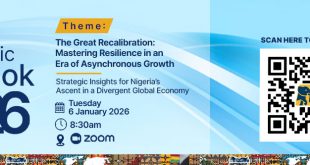
In public relations (PR) measurement and evaluation, one metric has long been a topic of debate and scrutiny: Advertising Value Equivalency (AVE). For over a decade, AVE has been used by PR professionals and organizations as a means to assign a monetary value to earned media coverage by equating it with the cost of equivalent advertising space. However, as a Chief Media Analyst with more than a decade of experience in PR measurement and evaluation, I have come to understand the inherent flaws and limitations of AVE, and it is crucial to shed light on why relying on this metric can be detrimental to accurately assessing the impact of public relations efforts.
The Flaws of AVE
Misalignment of Objectives: PR and advertising serve fundamentally different purposes within the marketing mix. While advertising is a paid form of communication aimed at promoting products or services, PR is centered around building relationships, managing reputations, and influencing perceptions through earned media coverage. Attempting to equate the two overlooks the unique value proposition of PR and can lead to misguided interpretations of its effectiveness.
Inaccurate Valuation: AVE relies on simplistic calculations that assign a monetary value to PR coverage based on equivalent advertising rates. However, this approach fails to consider crucial factors such as negotiated rates, audience engagement, message credibility, and the qualitative aspects of media coverage. As a result, AVE often provides inflated or misleading estimations of PR impact, undermining the credibility of measurement efforts.
Lack of Contextual Understanding: AVE disregards the contextual nuances of media coverage, including tone, sentiment, and relevance. Without considering these factors, it is impossible to gain a comprehensive understanding of the impact of PR efforts on audience perceptions and behavior. By reducing PR outcomes to mere monetary values, AVE fails to capture the qualitative dimensions of PR effectiveness and provides limited insights for strategic decision-making.
Practical Challenges of AVE Implementation
Difficulty in Calculation: Calculating AVE requires access to advertising rates for equivalent media placements, which may not always be readily available or accurately reflective of the value of PR coverage. This can lead to inconsistencies and inaccuracies in measurement practices.
Inconsistent Methodologies: Different organizations and practitioners may use varying methodologies for calculating AVE, leading to discrepancies and lack of standardization in measurement approaches. This inconsistency undermines the reliability and comparability of AVE data across different contexts.
Focus on Quantity over Quality: AVE tends to prioritize the quantity of coverage over its quality, incentivizing PR practitioners to prioritize securing high-volume media placements rather than focusing on strategic messaging and engagement with target audiences. This emphasis on quantity over quality can distort measurement efforts and detract from the strategic objectives of PR campaigns.
Embracing Alternative Approaches to PR Measurement
To overcome the limitations of AVE and accurately assess the impact of PR efforts, organizations must embrace alternative approaches to measurement and evaluation. Some alternative metrics and methodologies to consider include:
Outcome-Based Measurement: Shift the focus from outputs such as media mentions to outcomes such as changes in brand perception, customer behavior, and business results. By measuring the tangible outcomes of PR activities, organizations can gain a clearer understanding of their impact on achieving strategic objectives.
Quality Metrics: Utilize metrics such as sentiment analysis, message resonance, and share of voice to assess the quality and effectiveness of PR coverage. These qualitative metrics provide valuable insights into audience perceptions and engagement, enabling organizations to gauge the resonance of their messaging and positioning strategies.
Integrated Measurement Approaches: Integrate qualitative and quantitative methods, such as media monitoring, media analysis, and surveys, to gain a comprehensive understanding of PR impact and audience engagement. By combining multiple data sources and measurement techniques, organizations can triangulate insights and validate findings, leading to more robust and reliable measurement outcomes.
Moving Beyond AVE for More Effective PR Measurement
In conclusion, AVE represents a relic of outdated measurement practices that fails to capture the true value and impact of PR efforts. By relying on simplistic calculations and overlooking contextual nuances, AVE undermines the credibility and effectiveness of PR measurement and evaluation. To advance the field of PR measurement and ensure more accurate and meaningful assessments of PR impact, organizations must move beyond AVE and embrace alternative approaches that prioritize outcomes, quality metrics, and integrated measurement methodologies. By doing so, organizations can gain deeper insights into the effectiveness of their PR initiatives and make more informed strategic decisions, ultimately driving greater success and impact in their PR endeavors.
Philip Odiakose is the Chief Media Analyst and Consultant at P+ Measurement Services and TMKG Consulting, members of the Media Monitoring and Audit Group (MMAG). Both agencies are members of AMEC and PAMRO
 DailyrecordNg …Nigeria's hottest news blog
DailyrecordNg …Nigeria's hottest news blog








